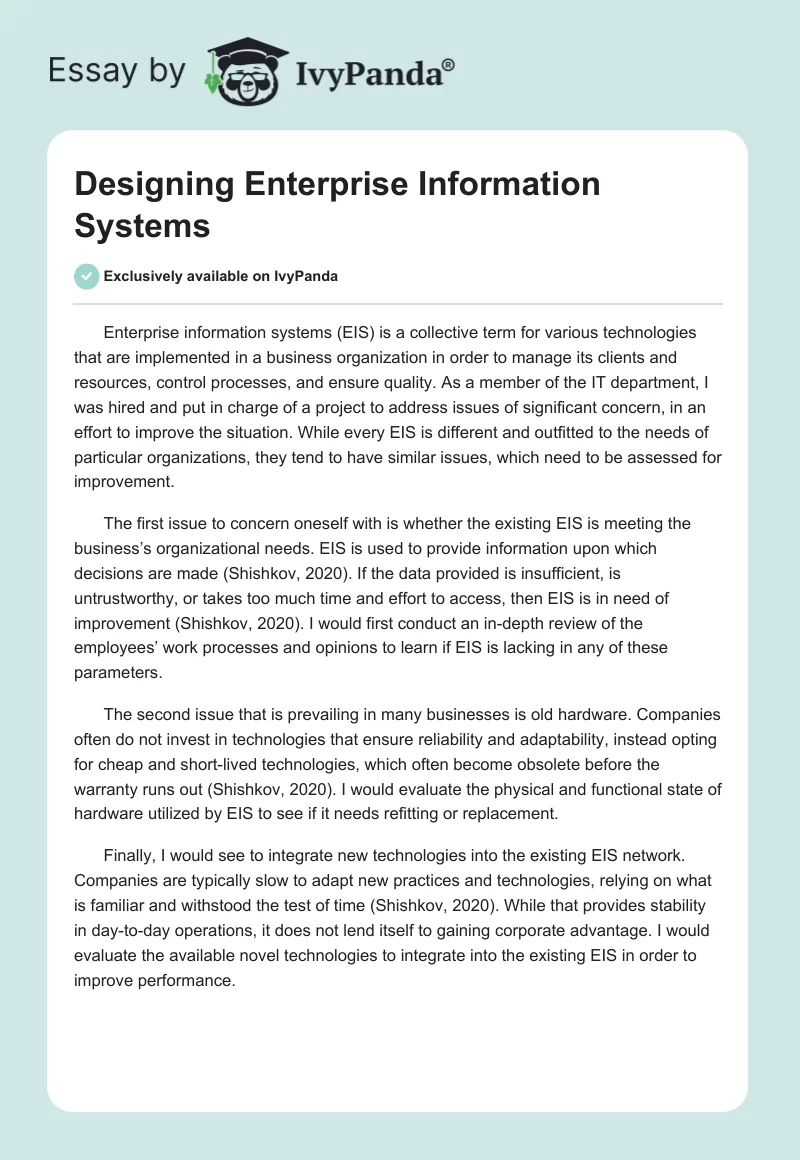Enterprise information systems (EIS) is a collective term for various technologies that are implemented in a business organization in order to manage its clients and resources, control processes, and ensure quality. As a member of the IT department, I was hired and put in charge of a project to address issues of significant concern, in an effort to improve the situation. While every EIS is different and outfitted to the needs of particular organizations, they tend to have similar issues, which need to be assessed for improvement.
The first issue to concern oneself with is whether the existing EIS is meeting the business’s organizational needs. EIS is used to provide information upon which decisions are made (Shishkov, 2020). If the data provided is insufficient, is untrustworthy, or takes too much time and effort to access, then EIS is in need of improvement (Shishkov, 2020). I would first conduct an in-depth review of the employees’ work processes and opinions to learn if EIS is lacking in any of these parameters.
The second issue that is prevailing in many businesses is old hardware. Companies often do not invest in technologies that ensure reliability and adaptability, instead opting for cheap and short-lived technologies, which often become obsolete before the warranty runs out (Shishkov, 2020). I would evaluate the physical and functional state of hardware utilized by EIS to see if it needs refitting or replacement.
Finally, I would see to integrate new technologies into the existing EIS network. Companies are typically slow to adapt new practices and technologies, relying on what is familiar and withstood the test of time (Shishkov, 2020). While that provides stability in day-to-day operations, it does not lend itself to gaining corporate advantage. I would evaluate the available novel technologies to integrate into the existing EIS in order to improve performance.
Reference
Shishkov, B. (2020). Designing enterprise information systems. Springer International Publishing.


